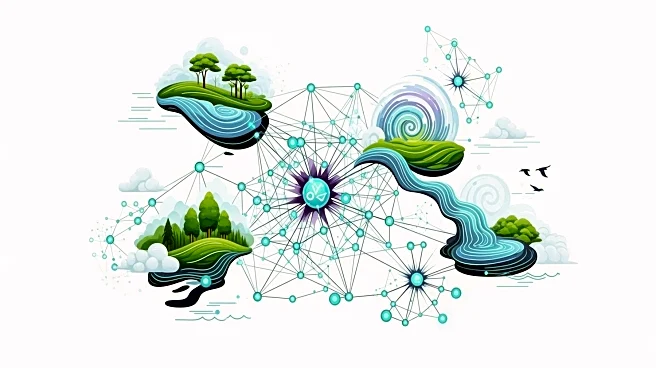What's Happening?
A study has utilized machine learning to investigate the environmental determinants and spatiotemporal dynamics of highly pathogenic avian influenza (HPAI) H5N1 outbreaks in India. The research incorporated meteorological, remote sensing, geographical,
and anthropogenic parameters into a risk modeling framework to identify vulnerabilities and predict outbreak risks. The study covered outbreaks from 2006 to 2024, using data cleaning, feature engineering, and spatio-temporal analysis to enhance model accuracy. The findings aim to improve surveillance and disease management strategies by generating risk maps and identifying hotspots for potential outbreaks.
Why It's Important?
The application of machine learning in understanding disease dynamics offers significant advancements in public health and epidemiology. By identifying environmental risk factors, policymakers can develop targeted strategies to prevent and control HPAI outbreaks, potentially reducing economic losses in the poultry industry. The study's approach provides a model for integrating technology into disease surveillance, which could be applied to other infectious diseases globally. Enhanced prediction capabilities may lead to more efficient resource allocation and better preparedness for future outbreaks.
What's Next?
The study's findings could lead to the implementation of more robust surveillance systems in India, utilizing machine learning models to monitor environmental changes and predict disease risks. Collaboration between government agencies and research institutions may be strengthened to refine these models and expand their application to other regions. There may be increased investment in technology-driven public health initiatives, focusing on real-time data analysis and outbreak prediction.
Beyond the Headlines
The ethical implications of using machine learning in disease prediction include concerns about data privacy and the potential for algorithmic bias. There may be discussions about the balance between technological advancement and human oversight in public health decision-making. Culturally, the integration of technology into traditional disease management practices could influence public trust and acceptance of new methods.
















